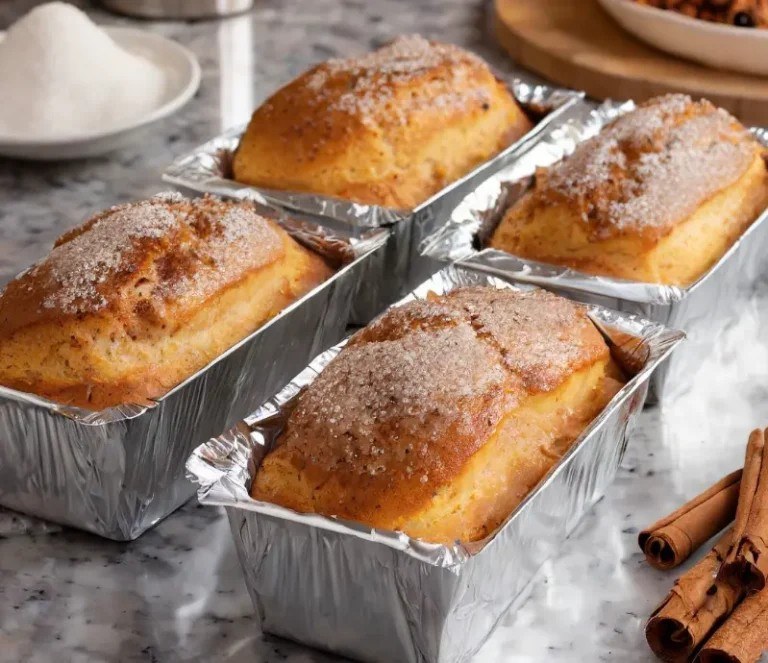ADVERTISEMENT
1/2 cup sugar – for sweetness.
3 tablespoons ground cinnamon – for that warm, spicy flavor.
2 tablespoons unsalted butter, softened – to spread the filling.
Directions:
Preparing the Dough: In a large mixing bowl, combine flour, sugar, instant yeast, and salt. Add warm milk, melted butter, water, and eggs. Mix until the dough comes together and starts to form a ball. Knead on a lightly floured surface for about 5 minutes, or until the dough is smooth and elastic.
First Rise: Place the dough in a greased bowl, cover it, and let it rise in a warm place for about 1 hour, or until doubled in size.
Making the Filling: While the dough is rising, mix together sugar and ground cinnamon for the filling. Set aside.
Shaping the Bread: Once the dough has risen, roll it out on a floured surface into a rectangle, about 1/4 inch thick. Spread softened butter over the dough and then sprinkle the cinnamon-sugar mixture evenly on top.
Rolling the Dough: Roll up the dough tightly from the long end, forming a log. Pinch the seams to close. Place the log, seam side down, into a greased 9×5 inch loaf pan.
Second Rise: Cover the loaf pan and let the dough rise for another 30-45 minutes, or until puffy.
Baking: Preheat the oven to 350°F (175°C). Once the dough has risen, bake the bread for 30-40 minutes, or until the top is golden brown and the bread sounds hollow when tapped.
Cooling and Serving: Remove the bread from the oven and let it cool in the pan for about 10 minutes, then transfer it to a wire rack to cool completely. Slice and serve.
Cinnamon Bread is delightful when served warm, with its soft texture and swirls of cinnamon-sugar offering a comforting and delicious treat. It’s fantastic on its own, or you can spread a bit of butter or cream cheese on top for an extra indulgent snack. This bread is not only a treat for the taste buds but also fills your kitchen with a warm, inviting aroma.
Read more about Cinnamon Bread:
Brief History of Cinnamon Bread:
Cinnamon bread, a delightful treat enjoyed by many, has a rich history that dates back centuries. Its origins are as flavorful as the bread itself. This sweet bread, infused with the warm, spicy aroma of cinnamon, began its journey in ancient civilizations. The use of cinnamon, a prized spice, was not just for flavor but also for its health benefits and preservative qualities.
As trade routes expanded, cinnamon, along with other spices, traveled across continents, making its way into Europe. It was here that cinnamon bread began to take a more familiar form. Bakers in the Middle Ages would blend this exotic spice into their dough, creating a luxurious item often reserved for the wealthy due to the high cost of cinnamon.
Over time, as cinnamon became more accessible, cinnamon bread grew in popularity. It evolved from a luxury item into a beloved staple in many households. Each region added its unique twist to the recipe, leading to a variety of styles and flavors of cinnamon bread.
Popularity and Variations:
Today, cinnamon bread holds a special place in the hearts of many. Its popularity spans across the globe, with each culture adding its unique touch to this classic recipe. In some places, it’s a simple, sweet bread with swirls of cinnamon. In others, it’s a rich, buttery loaf laden with raisins or nuts.
The versatility of cinnamon bread is part of its charm. It can be enjoyed as a breakfast treat, a snack, or even as a dessert. Some prefer it toasted with a dab of butter, while others enjoy it as French toast. The possibilities are endless.
The variations of cinnamon bread are a testament to its enduring appeal. From the cinnamon-rich swirls of the American cinnamon roll to the subtle, sweet loaves found in European bakeries, there’s a version for every taste. This adaptability has ensured that cinnamon bread remains a beloved treat, cherished by generations and destined to delight many more to come.
Cinnamon Bread: Understanding the Essentials
Read more on next page
ADVERTISEMENT
